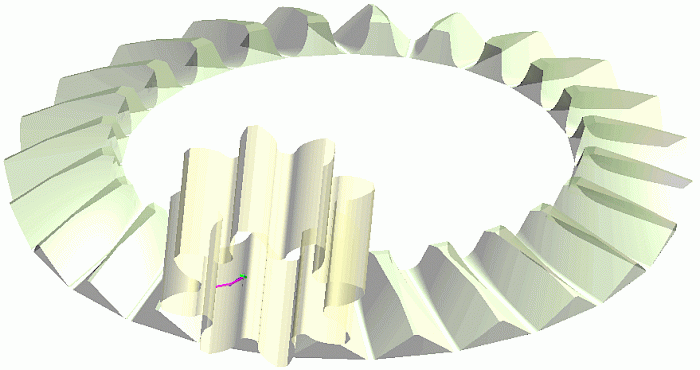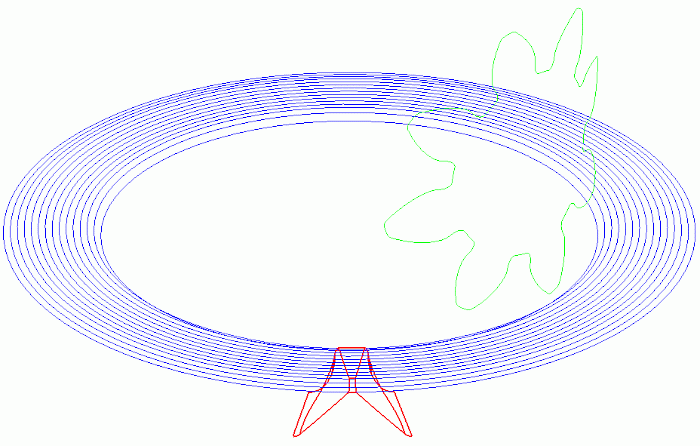Analyses of machine tools include metrological assessments, the simulative representation and the axis control with the areas control and set-point value generation. On the measurement side, a wide range of systems is available for measuring accelerations and displacements. On the simulation side, the in-house developed ANSYS-based simulation environment MORe offers a versatile tool for an efficient numerical analysis of the static and dynamic behavior of the systems comprising mechanical structure and controlled drives.
Machine simulation
The efficient simulation of machine tools requires the use of tools that take into account the specific properties of these systems: Small elastic deformations, changes in the machine configuration, migration of the interfaces and a limited excitation spectrum due to actuators and process. The simulation environment MORe specificly corresponds to these conditions and thus enables an efficient investigation of the static and dynamic behavior of machines as mechatronic systems. For industry, MORe is available as an internal application or as a service.
Control and feedback control
The requirements for static rigidity, path accuracy and productivity of machine tools have risen steadily in recent years. With a new measurement and control strategy, the required increase in the path accuracy at the tool centre point (TCP) on the workpiece is achieved by increasing the dynamic and static controller stiffness with a given mechanical structure. This optimization process can be supported by the dynamic measurement of the path at the TCP including suitable parameterization of the control.
Physical Simulation of Parts Behavior for Flexible Feeder Systems
Highly productive, flexible mounting systems are able to flexibly feed a wide range of parts by combining a vision system and a pick & place robot. For this purpose, a suitable gripping position of the part is required. The physical behavior of the parts has so far only been shown in practical experiments. Physical simulation provides the specific behavior of the parts on the basis of CAD data and thus allows to optimize the parts beforehand regarding feeding behavior.
Metrology
The field of metrology plays a significant role in connection with manufacturing, especially in the area of machine tools. This involves the testing of component specifications, the assessment of the motion behavior (static and dynamic) at the tool, at the tool center point (TCP), as well as the capture of the vibration behavior of the machines within the framework of experimental modal or operational vibration analyses. The results obtained in this way allow for the identification of weaknesses and may provide the basis for validating simulation models.
Gearing Calculation
The main advantage of face-gears compared to bevel gears is the high tolerable axial clearance of the pinion due to the fact that axial movement of the pinion does not have any impact on the contact pattern. A software developed within the scope of a project allows the geometrical design of face-gears taking into account different manufacturing processes, the kinematic transmission behavior and resulting stress distribution in operation. The geometrical measurement of face-gears is supported as well. Currently, the focus is on the assessment of resulting cutting forces in gear shaping and the prediction of efficiency of a face-gear drive.



